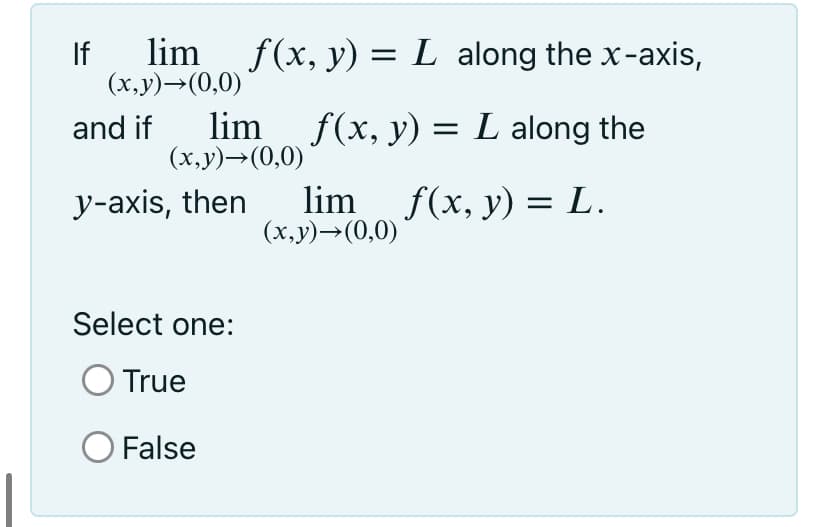If lim f(x, y) = L along the x-axis, (x,y)→(0,0) lim f(x, y) = L along the (x,y)→(0,0) and if y-axis, then lim f(x, y) = L. (x,y)→(0,0) Select one: True False
If lim f(x, y) = L along the x-axis, (x,y)→(0,0) lim f(x, y) = L along the (x,y)→(0,0) and if y-axis, then lim f(x, y) = L. (x,y)→(0,0) Select one: True False
Algebra & Trigonometry with Analytic Geometry
13th Edition
ISBN:9781133382119
Author:Swokowski
Publisher:Swokowski
Chapter1: Fundamental Concepts Of Algebra
Section1.3: Algebraic Expressions
Problem 20E
Related questions
Question

Transcribed Image Text:If
lim
f(x, y) = L along the x-axis,
(x,y)→(0,0)
lim
(x,y)→(0,0)
f(x, y) = L along the
and if
lim f(x, y) = L.
(x,y)→(0,0)
y-axis, then
Select one:
True
False
Expert Solution
This question has been solved!
Explore an expertly crafted, step-by-step solution for a thorough understanding of key concepts.
Step by step
Solved in 2 steps with 2 images

Recommended textbooks for you

Algebra & Trigonometry with Analytic Geometry
Algebra
ISBN:
9781133382119
Author:
Swokowski
Publisher:
Cengage

Algebra & Trigonometry with Analytic Geometry
Algebra
ISBN:
9781133382119
Author:
Swokowski
Publisher:
Cengage